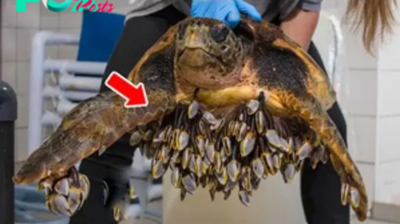Weird Animals
“Pangolins: Armored Guardians of the Wild”
The pangolin is a unique maMMAl known for its distinctive armor-like scales, which cover its body and provide protection from predators. There are eight species of pangolins, divided between Asia and Africa. These nocturnal creatures are primarily insectivores, feeding on ants and termites using their long, sticky tongues.
Physical Characteristics
Pangolins are easily recognizable by their large, overlapping scales made of keratin, the same material found in human nails. They have elongated, tube-like bodies with strong, curved claws that are used for digging into ant and termite mounds.
Habitat and Distribution
Pangolins inhabit a variety of environments, including forests, savannas, and grasslands. Asian species are found in countries such as China, India, and Southeast Asia, while African species are spread across central and southern Africa.
Behavior and Diet
Pangolins are solitary and primarily nocturnal. They are excellent burrowers and climbers, often sheltering in burrows or hollow trees during the day. Their diet consists mainly of ants and termites, which they locate with their keen sense of smell. They use their strong claws to break open insect nests and their long tongues to extract their prey.
Reproduction
Pangolins give birth to one offspring at a time, after a gestation period that varies between species. The young are born with soft scales, which harden after a few days. They remain with their mother for several months, riding on her back and learning to find food.
Conservation Status
Pangolins are among the most trafficked Animals in the world, targeted for their scales and meat. All eight species are listed as threatened, with varying degrees of endangerment, ranging from vulnerable to critically endangered. Conservation efforts focus on protecting their habitats, combating illegal trade, and raising awareness about their plight.
Ecological Importance
Pangolins play a crucial role in controlling insect populations, which helps to maintain ecological balance. Their burrowing activities also aerate the soil, promoting nutrient cycling and supporting plant growth.
-

 Weird Animals3m ago
Weird Animals3m agonht.The astonishing discovery of an alien mummy, perfectly preserved as if alive, shocked everyone.
-

 Weird Animals3m ago
Weird Animals3m agonht.Discover the chilling tale of the 1818 UFO crash and the lost portal to another planet.
-

 Weird Animals3m ago
Weird Animals3m agonht.Uncovering Lunar Mysteries: Ex-NASA Insiders Claim Extraterrestrial Presence in Lunar Structures
-

 Weird Animals3m ago
Weird Animals3m agonht.Today’s breaking news: a mysterious floating city-like UFO discovered in Dulali village has caused widespread panic.
-

 Weird Animals3m ago
Weird Animals3m ago.The Astonishing and Terrifying Experience of Coming Face to Face with a 4-Meter Octopus!..D
-

 Weird Animals3m ago
Weird Animals3m agonht.Breaking News: Documentaries Uncover UFO Crashes in the Desert
-

 Weird Animals3m ago
Weird Animals3m agonht.Breaking news: Utah woman claims to have raised abducted aliens since 1923, shocking everyone.
-

 Weird Animals3m ago
Weird Animals3m agonht.Exploring Egyptian Pyramids: Archaeological Finds Include UFO Detection and Surprising Discoveries


























